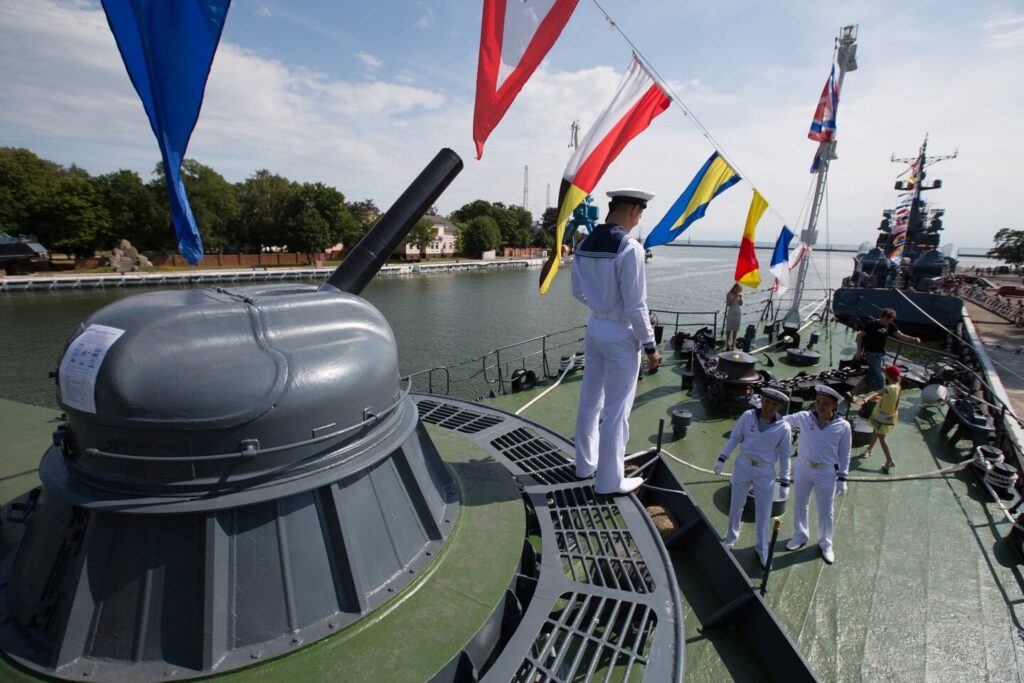
The clash was probably inevitable. Kaliningrad is a part of Russia implausibly wedged between Lithuania and Poland, two countries that belong to the European Union and NATO. Rail links between mainland Russia and the exclave must go through Lithuania, which has started enforcing EU sanctions against Moscow. That means blocking Russian trains that carry restricted freight such as coal, steel and kit containing certain technologies.
This amounts to a “blockade,” says the Kremlin. Unsurprisingly, it’s threatening dire but as yet vague consequences. Kaliningrad is certainly armed to the teeth. It’s home to Russia’s Baltic fleet as well as ballistic missiles that can carry nuclear warheads (Moscow hasn’t confirmed whether they actually do).
In reply, Vilnius and Brussels are pointing out that the new restrictions are not a blockade but simply compliance. As a member of the EU, Lithuania must enforce the bloc’s rules, including its sanctions. Those only became necessary because Russian President Vladimir Putin is waging a ruthless war against Ukraine.
It’s escaped nobody’s attention that if Russia actually were to retaliate against Lithuania — with an all-out assault or hybrid warfare — NATO’s mutual-defense clause would immediately kick in. One spark, and both sides could enter the spiral of doom.
But that’s by no means inevitable. If Russia and the West alike took a moment to ruminate on Kaliningrad’s dramatic and often tragic past, they might conclude that there are better ways to deal with situations such as this.
Kaliningrad’s history is in a sense a summary of the continent’s traumas. The area was at one point or another claimed, governed, fought over and lost by just about every rival power in the vicinity.
During the Middle Ages, the region was settled by a Baltic tribe called the Prussians, who as yet had nothing whatsoever to do with the Germans far to their west. In the 13th century, the (German-speaking) Teutonic Knights showed up and founded a very martial monastic state. Later, the area later became a fiefdom of the Polish Crown, with Lithuanian and Swedish plot twists.
It was as a duchy of the Hohenzollern dynasty — originally from Swabia but better known for its possessions in Brandenburg, the region around Berlin — that “Prussia” subsequently gave its name to that family’s up-and-coming German kingdom. The word came to stand for the militarism of spiked helmets and clicking heels, later associated with the German Empire.
But along the way, Koenigsberg was also a venue for European civilization at its most exalted. As a Hanseatic trading center, it was a polyglot metropolis, with Germanic, Baltic and Slavic dialects heard on the streets. For a time, it was even the continent’s eastern outpost of the Enlightenment, where Immanuel Kant (who never in his life ventured more than a few miles from his hometown) mused on “pure reason” and “perpetual peace” among nations.
As though to negate Kant, the region found itself during the 20th century near the center of what historian Timothy Snyder calls “Bloodlands” — the killing grounds between Hitler and Stalin. At the Potsdam Conference of 1945, the latter took Koenigsberg and made it part of the Soviet Union, renaming it in honor of Mikhail Kalinin after that communist leader’s death the following year.
That change in Kaliningrad’s status didn’t matter much at the time. Lithuania and Belarus next door were also part of the Soviet Union, and Poland would soon become a formal ally in the Warsaw Pact.
But then the Soviet Union collapsed, and within a few years both Poland and Lithuania joined the EU and NATO. Kaliningrad was left stranded, like an incongruous plaque to history, its scars well hidden underneath the drab post-Soviet cityscape. To Putin, it probably looks more like a huge and fixed aircraft-carrier group behind enemy lines.
So now what? Kaliningrad is certainly not at risk of starvation — Lithuania’s restrictions only affect about half of rail freight so far, and Russia can still supply its exclave via air and sea. And yet, Putin can’t afford to appear weak by leaving perceived snubs unanswered.
The sad irony is that this dispute, like the war in Ukraine and so much else that Putin is responsible for, wasn’t necessary, as Kaliningrad’s story proves. Post-war Germany, to howls of protests by its refugees from East Prussia, accepted the loss of Koenigsberg as final. It did the same with everything from Alsace in the west to Silesia in the east. Likewise, all other states that subsequently joined the EU forsook whatever territorial claims they imagined to have accumulated over the millennia.
This, in fact, is the alternative approach offered today by the idea of “Europe.” It’s to respect borders no matter how arbitrary they may once have been, and to gradually make them irrelevant through harmonious cooperation between states. It is, in short, the opposite of Putin’s worldview.
All Putin has to do to solve his Kaliningrad problem is to recognize the borders of Ukraine and other states — and stop being an aggressor. Until then, Lithuania, the EU and NATO must keep up the pressure, and if necessary take the heat.
More From This Writer and Others at Bloomberg Opinion:
Mariupol Could Be the Thermopylae of the 21st Century: Andreas Kluth
Putin May Win in Ukraine, But the Real War Is Just Starting: Max Hastings
Putin’s Parades Can’t Hide a Missing Victory: Clara Ferreira Marques
This column does not necessarily reflect the opinion of the editorial board or Bloomberg LP and its owners.
Andreas Kluth is a Bloomberg Opinion columnist covering European politics. A former editor in chief of Handelsblatt Global and a writer for the Economist, he is author of “Hannibal and Me.”
More stories like this are available on bloomberg.com/opinion

